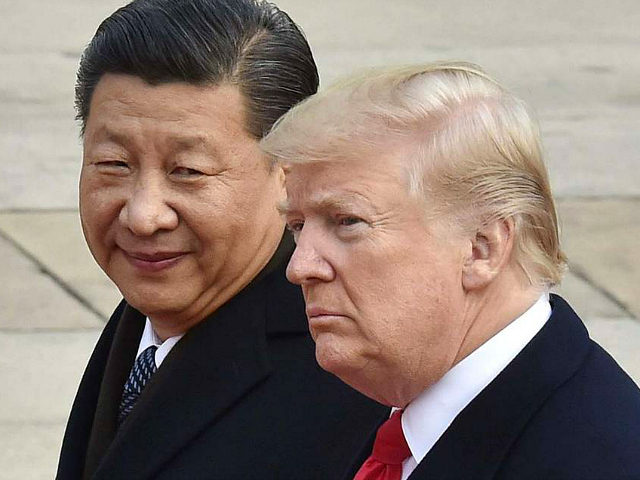The Chinese government retaliated against the United States with matching tax penalties to tariffs the United States announced Friday would be levied on China’s goods.
The U.S. announcement follows a U.S. Trade Representative’s section 301 investigation into China’s trade practices that recently concluded. President Donald Trump charged the USTR with opening the investigation in March. Trump gave the go-ahead for the additional $50 billion in tariffs on Thursday afternoon, the same day he met with senior trade, economic, White House, and national security officials.
The Associated Press reported Friday morning, “[China’s] Commerce Ministry said it also was scrapping deals to buy more American farm goods and other exports as part of efforts to defuse a sprawling dispute over its trade surplus and technology policy.”
“The Chinese side doesn’t want to fight a trade war, but facing the shortsightedness of the U.S. side, China has to fight back strongly,” the statement from China, printed by AP said. “We will immediately introduce tax measures of equal scale and equal strength, and all economic and trade achievements reached by the two sides will be invalidated.”
China will begin an estimated $34 billion in tariffs on U.S. imports starting July 6, according to Bloomberg. This will include U.S. agricultural products, autos, and seafood. Additional Chinese tariffs on U.S. chemicals and medical and energy goods are expected to be identified at a later date.
The Friday White House release announcing the new U.S. tariffs on China specified a 25 percent tariff on $50 billion of Chinese goods containing “industrially significant technologies.” The reasoning was based on “China’s theft of intellectual property and technology and its other unfair trade practices.”
The goods covered in the new U.S. tariffs on China include “goods related to China’s Made in China 2025 strategic plan to dominate the emerging high-technology industries that will drive future economic growth for China, but hurt economic growth for the United States and many other countries.” The list released by the U.S. Trade Representative’s office Friday covered “1,102 separate U.S. tariff lines valued at approximately $50 billion in 2018 trade values.”
China threatened retaliation to the U.S. proposed $50 billion in tariffs on Chinese goods with their own $50 billion in tariffs on U.S. goods, among the potentially affected goods: soybeans, certain aircraft, technology, orange juice, vehicles, whiskey, and beef. Trump shot back at the time with an additional $100 billion in potential tariffs, after which Chinese President Xi Jinping appeared to relent in threats of retaliation and offer of a potential cut in tariffs on U.S. auto imports to China.
While the White House expressed appreciation for Xi’s reaction, press secretary Sarah Sanders affirmed that the Trump administration would not relent in the proposed tariffs until it sees “concrete actions from China.”
The U.S. and China have been in the midst of intense trade talks, shuffling trade representatives of each side from Beijing to Washington, DC, and back to Beijing. Trump economic adviser Larry Kudlow told CBS in late May that the U.S. was “making terrific progress” with China after the “very positive” DC-based round of talks. He has repeatedly directed blame toward China, not Trump, for the actions that President Trump has taken to circumvent China’s “unfair and illegal trading practices, intellectual property theft, [and] forced technology transfers.”
The U.S. and China issued a joint statement following the DC-based round of trade negotiations that read in part, “Both sides agreed on meaningful increases in United States agriculture and energy exports.” The U.S. was to send a delegation back to Beijing which it did in early June. Commerce Secretary Wilbur Ross led the delegation that included U.S. agricultural and foreign affairs officials. As those talks concluded, China again warned against U.S. tariffs, threatening: “If the US introduces trade sanctions including tariff increases, all economic and trade achievements negotiated by the two parties so far will be void.”
President Trump suggested the U.S. may have to craft a “different structure” in making a trade deal with China. His statement came one day after a U.S. Commerce Department investigation determined that China had been using Vietnam to circumvent U.S. anti-steel dumping measures.
Follow Michelle Moons on Twitter @MichelleDiana.

COMMENTS
Please let us know if you're having issues with commenting.